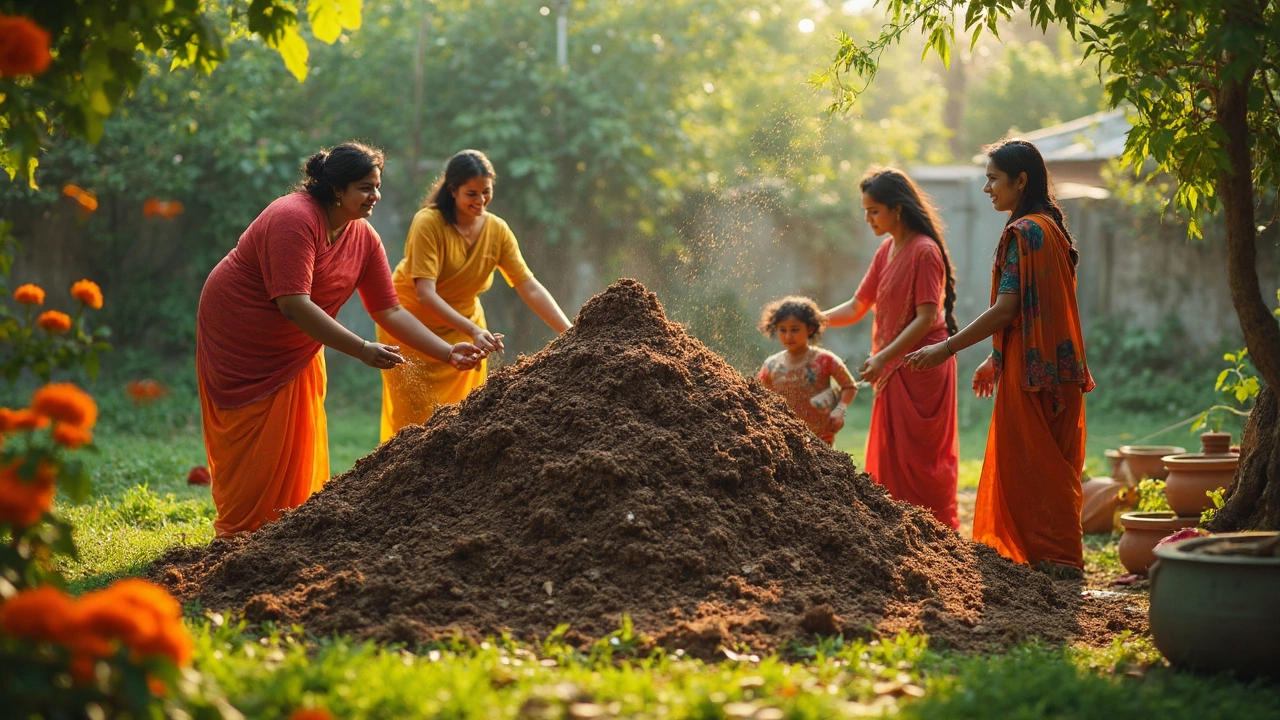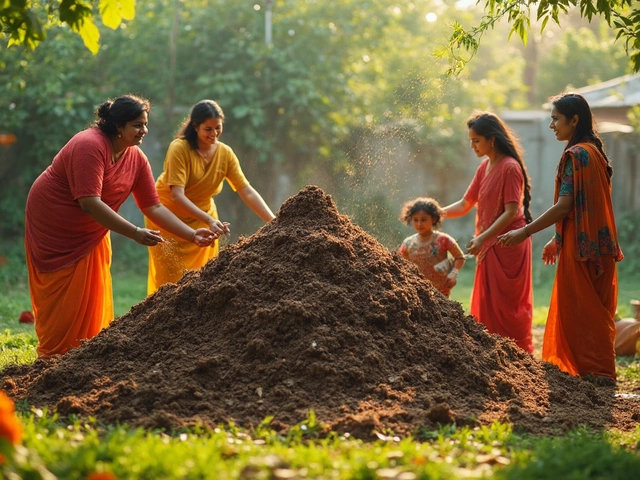Ever thought your compost pile was a bit like a lazy teenager—sitting around, not doing much, taking forever to get moving? You’re not alone. Plenty of gardeners lose their patience waiting for kitchen scraps and grass clippings to magically turn into that rich, crumbly soil booster. What most folks don’t know is there’s a simple trick to wake up your compost: compost activators. If you’ve never heard of them, or you’re wondering if they actually make a difference, buckle up. There’s a lot to uncover, and it just might change the way you think about compost forever.
Understanding Compost Activators: What Are They and Why Use Them?
So what is a compost activator, anyway? The answer’s more straightforward than you’d expect. A compost activator is any substance added to your compost pile to speed up the breakdown of organic material. Think of it like high-octane fuel for the microbes doing all the heavy lifting inside your pile. These hardworking bacteria and fungi are the real MVPs in the decomposition process. Give them the right conditions, and they power through banana peels, coffee grounds, eggshells, and even shredded paper—turning all that mess into nutrients plants love.
But most backyard piles don’t have the perfect balance. If you toss in too many autumn leaves or dry twigs with not enough green stuff (like fresh grass or veggie scraps), the whole thing grinds to a halt. That’s where a compost activator steps in. It restores balance and gives things a jolt. The most popular activators add extra nitrogen—the real firestarter that microbes crave. Some activators are completely natural, like blood meal, alfalfa meal, or even fresh manure from herbivores (think rabbits or chickens). Others come in commercial packages, usually looking like weird garden fertilizer with instructions to sprinkle or mix them in. The difference? Homemade activators tend to be cheaper and because they’re less processed, some gardeners say the results are richer and even more sustainable.
Let’s get into the science for a sec. The main goal is to maintain a good carbon-to-nitrogen (C/N) ratio. That’s a fancy way of saying your pile needs a mix of "brown" stuff (leaves and straw: high-carbon) and "green" stuff (fruit peels, grass clippings, coffee grounds: high-nitrogen). Activators either bump up the nitrogen or help out by boosting the microbe population. Here’s a jaw-dropper: a well-balanced compost can heat up to over 140°F (60°C) inside. That’s hot enough to kill most weed seeds and diseases. A pile left to do its own thing might take over a year to break down, but with an activator—and a little strategy—you can cut that time in half, or even less.
Take a peek at the table below. It breaks down common activators, what they bring to the party, and any quirks to watch.
| Compost Activator | Main Nutrient | Typical Use Rate | Any Downsides? |
|---|---|---|---|
| Blood Meal | High Nitrogen | 1 cup per 1 cubic yard | Strong odor, can attract animals |
| Alfalfa Meal | Good Nitrogen & Trace Minerals | 2 cups per 1 cubic yard | May warm up quickly (check moisture levels) |
| Chicken Manure | Very High Nitrogen | Mix thinly—avoid clumping | Can "burn" compost if overused, smells strong |
| Commercial Compost Accelerator | Blend (Nitrogen, Enzymes, Microbes) | Follow label | Cost more, may not be organic |
| Comfrey Leaves | High Nitrogen, Potassium | Layer handfuls in | May attract slugs if pile is too wet |
It’s wild how fast an activator can kick things into gear. Some people notice heat building up in 24 to 48 hours—sometimes the whole pile steams if you poke it on a cold morning. Microbial activity multiplies fast, kind of like that sourdough starter you keep in the kitchen: feed it right, and it just takes off. And speaking of kitchen, did you know even your morning coffee can play a role? Used coffee grounds (rinsed to mellow the acidity) are a sneaky nitrogen source, just on their own. Same goes for spent tea leaves. Small, easy ways to keep the pile humming.

How to Use Compost Activators for Fast, Healthy Compost
Making compost isn’t rocket science, but a little know-how amps up the payoff. Once you decide to give compost activators a try, the next step is getting the method down. First things first: don’t just dump an activator on top and expect miracles. The trick is mixing—activators need to reach the core of the pile, where the temperature climbs and decomposition is fastest.
Start with building your pile in layers, like a living lasagna. For each “brown” layer (dry leaves, cardboard, straw), add an equal “green” layer (kitchen scraps, grass, plant trimmings). After every couple of layers, sprinkle your chosen compost activator. Give everything a good toss (use a pitchfork if you have one, or just your hands and some old garden gloves). The more surface area, the quicker the microbes can munch through it.
If you want to go full-on super composter, check moisture too. The best piles feel like a wrung-out sponge—damp, not dripping. Too dry and the microbes go dormant. Too wet, and things turn slimy, even smelly (think rotten eggs). Add shredded cardboard or straw to offset too much water, or hose it down gently if it looks dry, especially after adding dry manures or meals as activators. If you've got a big yard and lots of leaves in fall, that’s your brown sorted for months. In the summer, grass clippings and deadheaded flowers provide most of the green. Got old bread or rice? These go in too—just not in huge amounts, or they can attract critters.
Turning the pile regularly is the secret sauce. Every week or two, use a fork or shovel to move the outside material toward the center and vice versa. This brings oxygen into the pile, which microbes need as badly as we do. It also mixes fresh activator throughout, making sure the magic doesn’t stall out in a corner somewhere. After aerating and topping up with activator, most gardeners witness the core heating up (“cooking,” as they say). Check with a cheap compost thermometer—they start at about $10, and seeing a needle hit 130°F+ is absurdly satisfying. It means those microbes are working overtime.
One sneaky tip: if you want compost ASAP, go smaller with your inputs. Tear up or shred materials like cardboard, stalks, and big leaves. The more edges you provide, the easier for decomposers (microbes and other bugs like worms) to chomp through them.
Some garden legends swear by extra boosts, too. A couple scoops of finished compost from last year can act as a microbe inoculant—think of it like a probiotic shot for your pile. Or, if you’re really in a rush, a few shovels of healthy garden soil mixed in will kickstart the process (garden soil already teems with helpful bacteria and fungi).
Watch out for some common pitfalls. Don’t go heavy with activators like manure or blood meal—they’re strong and can push the pile too hot, even killing the helpful tiny life in there. Balance is your friend. If you see worms, that’s a good sign: they love well-hydrated, nitrogen-rich, balanced compost as much as anyone. On the flipside, loads of flies or rodents digging in means you need more brown material, a fresh turn, and maybe a cover like burlap to keep things tidy.
Troubleshooting is part of the deal. Slow pile not breaking down? Too much carbon-rich brown stuff, so add more green—or an activator. Pile too wet and smelly? Add more browns, and poke extra air holes with a stick. Composting is way more forgiving than most people think—you’ll get the hang of it fast, and once you see how activators transform the results, it’s hard not to geek out over the process.

Picking the Right Compost Activator for Your Garden and Lifestyle
Not all compost activators fit every gardener. Your choice depends partly on what’s handy and how hands-on you want to get. If you keep chickens or rabbits, their manure is a powerhouse activator, ready to use anytime. Got a patch of comfrey or alfalfa growing wild in your yard? Lucky you—those leaves pack a serious nitrogen punch and you don’t even have to buy anything. For apartment dwellers with balcony compost bins, kitchen scraps and a sprinkle of coffee grounds do wonders and don’t need any special handling.
If you’re the type who prefers the "open and pour" convenience, commercial compost activators are shelf-stable, easy to measure, and work well for new piles or tumblers. Some even contain extra enzymes and bacterial cultures for a one-two punch. You might see familiar brands like Jobe’s, Espoma, or Ringer at the garden center. The upside is you know exactly what you’re getting, with instructions down to the tablespoon. On the downside, these can cost five to ten times more than free DIY options.
For organically-minded folks, stick with animal-free options—alfalfa meal, comfrey, fresh green yard waste, and leaf mold all qualify. Just double-check your sources. For instance, grass clippings from lawns treated with herbicides can throw off your compost or harm veggie gardens later. The same goes for manure from animals fed with medicated feed. Natural is better, as long as you’re sure what’s in your stuff.
Let’s talk numbers. The EPA estimates food scraps and yard waste together make up more than 28% of what we throw away every year. If every home diverted just part of that into compost, landfills would shrink, methane emissions would drop, and countless gardens would flourish like never before. Compost activators make this process practical and rewarding—even in smaller spaces or for folks with less time to spare.
A few more tips from gardeners who’ve been there: keep your bin covered if you’re in a rainy region—it stabilizes moisture and speeds decomposition. If you live somewhere hot and dry, try tucking your pile into a shady spot, and use more water-rich activators like coffee grounds or green plant clippings. If you want finished compost fast, aim for a pile at least three feet wide and equally tall. Anything smaller loses heat; anything bigger might need some serious muscle to turn. (Or just a strong friend!)
Not sure if your activator is working? Track your progress. Fresh scraps, once layered and activated, will shrink by half in a week or two if you’re on target. Finished compost smells sweet, earthy, never sour or moldy. It’s like a forest floor in a bag—black gold for any gardener. Use it everywhere: flower beds, veggie patches, even for potted houseplants.
All said, the secret to better, faster, healthier compost is less about buying fancy gadgets and more about understanding what’s happening in that little ecosystem. Compost activators are your shortcut to a living, breathing pile that does its job on your terms—not on Mother Nature’s slow timeline. Experiment, tweak, and soon you’ll have compost that’s the envy of your whole block.




